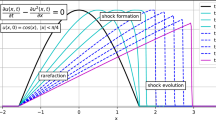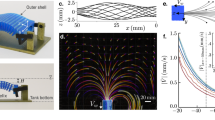Abstract
WILL any physicist be good enough to explain the following to an ignorant amateur? If a clean saucer be half-filled with a decoction of tea on the surface of which bubbles or unwetted shreds of ash (as from the consumed paper round the lighted end of a cigarette) are floating but not in a continuous layer, then if the decoction, after coming to rest, be gently rocked the floating particles will partake of its perpendicular, but little, if at all, of its lateral motion. Sunken particles, on the other hand, will partake of the lateral motion. Again, if the saucer be gently tilted the fluid will flow away, but each floating particle will remain stationary, and will be deposited under its original position.
This is a preview of subscription content, access via your institution
Access options
Subscribe to this journal
Receive 51 print issues and online access
$199.00 per year
only $3.90 per issue
Buy this article
- Purchase on SpringerLink
- Instant access to full article PDF
Prices may be subject to local taxes which are calculated during checkout
Similar content being viewed by others
Author information
Authors and Affiliations
Rights and permissions
About this article
Cite this article
REID, G. The Movements of Floating Particles. Nature 93, 60 (1914). https://doi.org/10.1038/093060b0
Issue date:
DOI: https://doi.org/10.1038/093060b0



